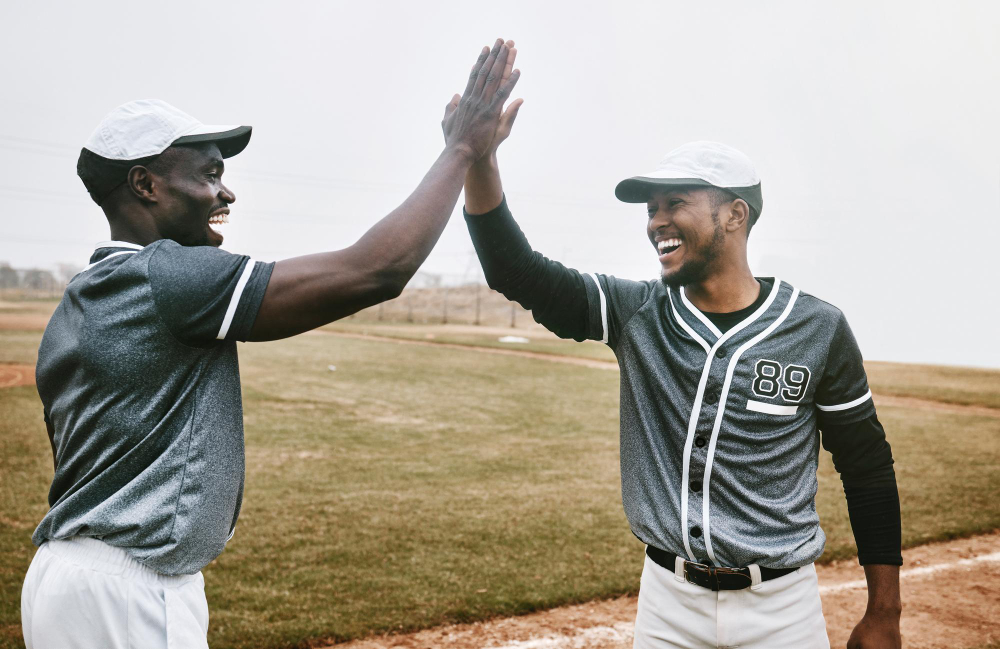Introduction: More Than Just a Slap of Skin
It’s spontaneous, energetic, and oddly satisfying. Whether you’re celebrating a win, greeting a friend, or just feeling awesome — the high five is a go-to move. But have you ever stopped to think about where it came from?
The history of the high five is more mysterious than you might expect. While it feels like a timeless gesture, its roots are surprisingly recent — and surprisingly debated. Some say it began on the baseball field, others trace it to basketball courts or even 1920s black culture.
Let’s dig into the origin of the high five, explore who really invented the high five, and uncover the fascinating (and fun) story behind this everyday celebration.
What Exactly Is a High Five?
Simple in action, big in meaning — a high five involves:
- Two people raising a hand each
- Slapping their palms together mid-air
- Often accompanied by a cheer, smile, or enthusiastic “Yeah!”
It’s universal, wordless, and instantly recognizable — a symbol of celebration, solidarity, and good vibes.

The Disputed Origins: Who Really Invented the High Five?
The 1977 Dodgers Dugout Story
The most widely accepted version credits the high five to October 2, 1977, during a baseball game between the Los Angeles Dodgers and the Houston Astros.
Here’s how it went down:
- Outfielder Dusty Baker hit a home run.
- His teammate Glenn Burke, waiting on deck, raised his hand instinctively.
- Baker, unsure what to do, slapped it.
Boom — the first recorded high five in sports history. Or so the story goes.
Burke later said:
“It was just something that happened… and it felt right.”
Some historians now credit Burke as the inventor of the gesture — especially since he was one of the first openly gay MLB players and used the high five as a symbol of pride and identity.
But Wait — Was It Basketball?
Another contender comes from the University of Louisville basketball team in the late 1970s.
- Players like Derek Smith and Wiley Brown were reportedly using the high five before the Dodgers incident.
- Their coach claims it was part of their pregame hype ritual.
Which came first? Hard to say. What’s clear is that the high five was having a moment — it emerged organically in multiple places, right when American culture was craving new forms of celebration.
Predecessors to the High Five: Low Fives and Beyond
Before the high five, there was the low five — a gesture popular in African-American communities as early as the 1920s.
- Often seen in jazz clubs or social circles
- Used as a sign of respect, coolness, or inside camaraderie
While not the same motion, the low five paved the way for the high version to evolve. It moved upward — literally and figuratively — as sports and pop culture began to amplify it.
The Rise of a Cultural Icon
By the 1980s, the high five was everywhere:
- Sports: From little leagues to the NBA
- TV and movies: Think “Top Gun” or sitcom freeze frames
- Advertising: A gesture that instantly said “win,” “team,” and “yes!”
It became a kind of body-language shorthand — no need for words when a slap of palms says it all.
The high five even entered the Guinness World Records, with the most high fives in one hour or the highest high five between two people jumping.

Fun Facts About the High Five
- National High Five Day is celebrated on the third Thursday of April.
- There’s a “too slow” variation — where you psych someone out by pulling your hand away. Classic.
- The largest high five chain involved over 2,000 people.
- High fives have been banned in some schools — seen as disruptive (but awesome).
The Digital High Five: Emojis and Beyond
In today’s world, you don’t even need to be in the same room to share a high five:
- 🙌 Emoji (often mistaken as “praise hands”) is frequently used as a virtual high five
- GIFs, memes, and reaction stickers keep the gesture alive online
The high five has adapted to the times — still symbolizing joy, solidarity, and shared success, whether you’re on the field or in a group chat.
Conclusion: More Than a Gesture
The history of the high five shows us how even the simplest actions can have rich, complex stories. Whether it began on a baseball field or a basketball court, one thing’s for sure — it stuck because it feels good.
It’s a reminder of connection, celebration, and being in sync with someone — even for just a moment.
So next time you high five someone, remember: you’re participating in a modern tradition with deep roots and a joyful spirit. 🖐
